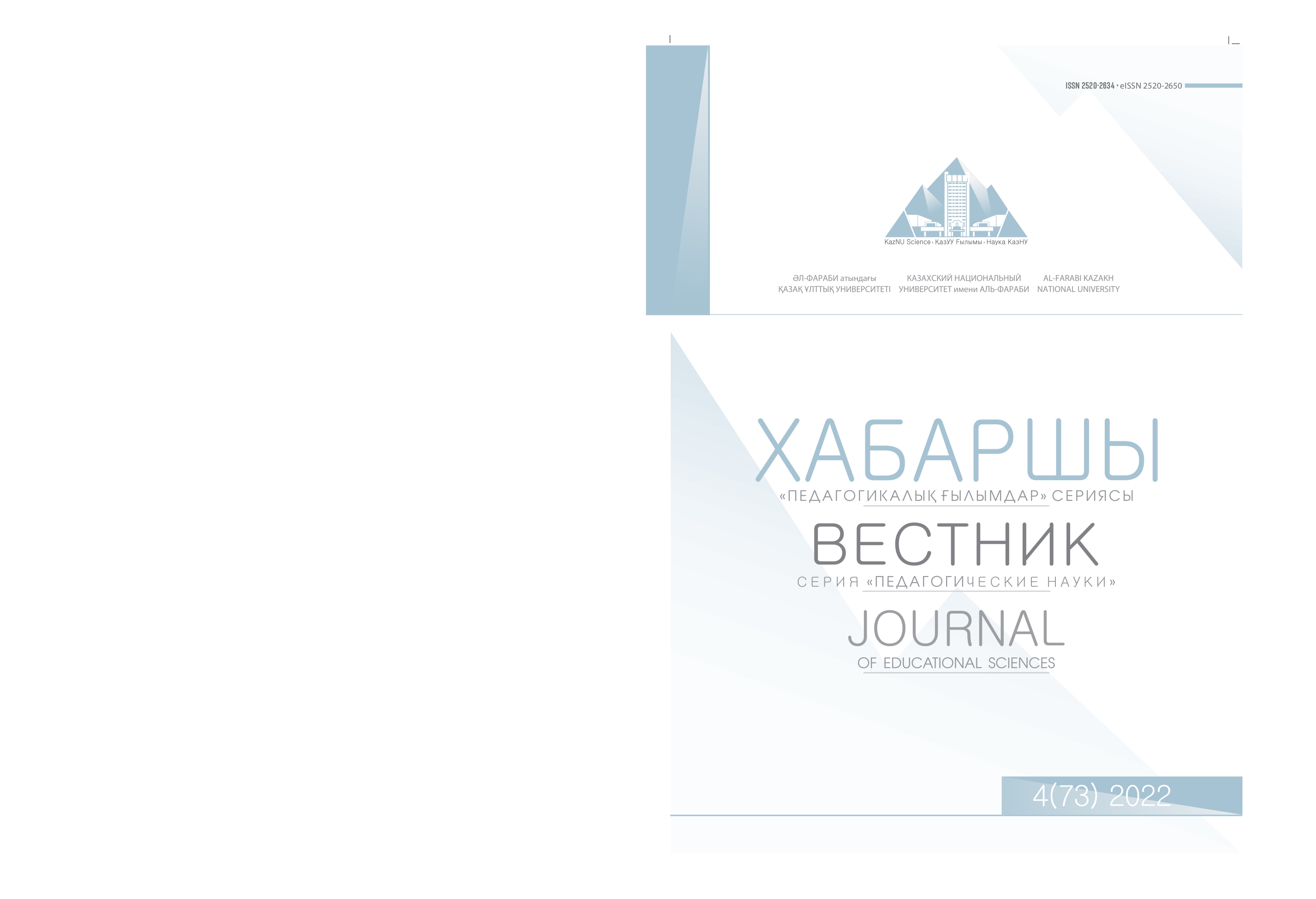Model of learning in the age of digital society: instructional design of blended learning
DOI:
https://doi.org/10.26577/JES.2022.v73.i4.06Abstract
This article analyzes the results of the first phase of the experiment in studying the theory and practice of blended learning implementation in higher education institutions, determining the content and structure of the instructional design of blended learning, including the concept, didactic and technological integrity. Having studied numerous studies on the possibilities of blended learning, forms of combining traditional and distance learning formats, effective use of digital technologies and innovative methods, the authors suggest a deeper consideration of the pedagogical aspects of blended learning, ensuring student's conscious activity in education, self-regulation, self-control. In this regard, it is of great importance to identify the pedagogical potential of digital resources, to study the issues of changing the structure of educational programmes and the learning process, the technologization of blended learning.
The methodological bases are humanitarian, systemic, interdisciplinary, synergetic, competence, reflexive approaches, theoretical analysis of the potential of didactics of blended learning. The methods of theory and practice study at the intersection of pedagogy and information technology, comparative analysis, modelling, synthesis have been applied in the implementation of research tasks. At the stage of empirical data collection there were carried out questionnaires, interviews with students and teachers, analysis of educational programmes and normative documents, generalization, comparison of the results of the experiment, analysis of digital resources in education.
The identification of the components of methodological, didactic, technological and structural-content model of instructional design of blended learning based on the analysis of the theory and practice of learning in higher education constitutes the scientific significance and novelty of the study. The practical significance of the study is the definition of the necessary level of institutional, pedagogical and technological training, evaluation objects, criteria and indicators of their readiness. The results of the first stage of the study, the obtained results and conclusions serve as a basis for the transition to the next stage of instructional design of blended learning. The survey was conducted at the West Kazakhstan Innovation and Technical University, 280 students of 2-3 courses and 56 magistrates took part in it.
Keywords: blended learning, educational transformation, instructional design, blended learning didactics, integration of educational resources, institutional, pedagogical, technological training.







